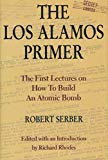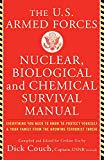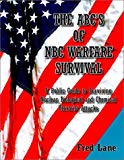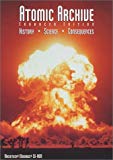Nuclear Weapons and the Development of Nuclear Warfare
Nuclear weapons are the most powerful and destructive technologies ever created. From the first notion that nuclear technology could be harnessed to create a bomb, massive amounts of time, energy and government funding have been invested into further increasing the destructive yield of nuclear weapons. The process of development was carried out independently by governments worldwide. Despite the segregation of groups of scientists and secrecy surrounding their discoveries, design strategies and problems remained basically the same in all development projects with similar solutions being realized more or less concurrently. The first and most basic fission bombs quickly evolved to produce higher and higher yields. Through discoveries and modifications, nuclear weapons technology evolved to eventually produce fission-fusion weapons, which are what compose most of the worlds nuclear arsenals today. Further development, ironic as it may seem, is highly unnecessary and unlikely except, perhaps, to increase efficiency due to the ridiculous power wielded in every modern thermonuclear weapon. The popular modern threat of nuclear weapons is the possibility of terrorist groups acquiring the materials to produce bombs. “Low-tech” nuclear weapons are feasible and would seem highly undesirable for such groups to possess. The home enthusiast might even flirt with the idea of creating his or her own nuclear arsenal. Assuming one could obtain 10-20kg of highly enriched fissionable material, this may not be such a far-fetched idea after all. There are a number of things anyone must know about nuclear weapons, however, before declaring themselves a nuclear power.
Fission Weapons (Atomic Bombs)
Fission weapons, or “Atomic Bombs”, are based upon nuclear fission. Nuclear fission occurs when the nuclei of certain isotopes of heavy elements such as uranium or plutonium capture neutrons. The result is that the nuclei become unstable and break apart into two smaller nuclei. This process converts some of the mass into energy and releases varying numbers of neutrons that go on to collide with other nuclei causing them to break apart and so on and so on in a chain reaction. In nature this process is irrelevant due to the low natural occurrence and densities of radioactive isotopes. During weapons construction, however, isotopes are refined and concentrated to ultra-pure forms so that fission can occur at the maximum efficiency possible when the weapon is exploded.
Every nuclear weapon design revolves around achieving criticality in fissionable bomb material. When the fissionable material is large enough and dense enough the rate of neutron escape from its surface is so low that it becomes a “critical mass”. Once the fissionable material reaches this state a self-sustaining reaction can occur. At this point in an atomic bomb, via various mechanisms, neutrons are introduced to the critical mass causing the chain reaction to begin and the bomb to explode.
As simple as the concepts may seem, there are a number of complex problems standing in the way of constructing an atomic bomb. First, one must be sure to keep the fissionable material in a subcritical state before detonation. Background neutrons from radioactive isotopes and spontaneous fission would be devastating if the critical mass was already assembled inside the weapon. In all likelihood, the weapon would detonate an imperceptible amount of time after the critical mass was formed — obviously contrary to the goals of producing nuclear weapons in the first place. Second, one needs to assemble the fissionable material into the critical state while making sure it doesn’t come into contact with any neutrons. Third, neutrons must be introduced when the material is assembled in the most optimally critical configuration. In summary, a feasible weapon requires an effective means of producing a critical state within the fissionable material and initiating the fission reaction precisely when this optimal state occurs. Two popular choices of design exist with varying effects depending on the requirements of the development program. For high yield and high complexity the choice is implosion assembly. For rogue states and terrorists there is the gun style. Tried tested and true, gun style atomic bombs are a formidable option when ruggedness, low complexity and low development cost are concerns.
Implosion assembly involves compressing a subcritical mass of fissionable material into a critical one with specially arranged explosives. Typically the explosives are arranged in a spherical or cylindrical fashion around the subcritical mass. The shock wave from the explosives is focused with special lenses to form one uniform shock wave that can compress solid uranium or plutonium by a factor of three. Explosive lenses are devices composed of varying materials that allow a shock wave to pass through different parts at different speeds. Lenses cause a shock wave’s behavior to be altered in a calculated manner allowing for the creation of a unified shock wave between all explosives surrounding the fissionable material. During the peak of the compression, which lasts less than a microsecond, the material is in its critical state or supercritical state, in the case of multiple critical masses being produced. The increased density in implosion style bombs reduces the neutron mean free path allowing for fission to occur more rapidly thereby allowing the reaction to progress further before the core blows itself apart. This greatly increases the efficiency and or yield of the bomb as well as potentially reducing the amount of expensive fissionable material needed for it. The main drawback of implosion style is the complexity and large volumes of research required to make it work.
Gun assembly involves firing one piece of fissionable material at another. It is possible to create nearly three critical masses in this manner. To realize how this is done it is necessary to imagine a sphere of fissionable material. Removing roughly a third of the material from the center leaves a hollow pit. This reduces the mass and density of the larger piece leaving it barely subcritical. The removed piece, also sub critical, is then placed in an artillery barrel aimed at the hollow pit from where it was removed. The main advantage of gun assembly is its simplicity. The lack of compression, however, leads to low efficiency. Also, only highly enriched U-235 can be used due to the slow insertion speed of the projected fissionable material. Since the critical mass takes so long to reach the optimal supercritical configuration with gun assembly, an isotope with a low spontaneous fission rate U-235 must be used to minimize the possibility of early detonation. While it may be large, heavy, and extremely inefficient, the gun assembly atomic weapon is the simplest and easiest nuclear weapon to design and implement.
Once the optimal critical mass has been assembled it is necessary to start the reaction. One could simply wait for spontaneous fission to occur, releasing neutrons and starting the reaction. In implosion assembly, however, there is a good possibility that spontaneous fission wouldn’t occur until the shock wave was already dying out leading to a less than optimal reaction and a much lower explosive yield. Several neutron-producing methods have been developed. The method used in the first atomic weapons involves the following reaction:
Be-9 + He-4 —> Be-8 + n + He-4
When beryllium-9 is struck with an alpha particle it gives up a neutron. Thus, combining beryllium-9 with a neutron emitting substance such as polonium-210 at the desired time of detonation will produce the flux of neutrons needed to start the fission reaction. The main drawback of this method is the short half-life of polonium-210 (138.4) days and other alpha emitters. Weapons containing these chemicals for neutron generation have to constantly be serviced so that these chemicals can be replenished. Another method to generate neutrons involves using the heat produced by the implosion of the core to start a small short-lived fusion reaction within a deuterium (H-2) and tritium (H-3) mixture. The imploded core of fissionable material can reach several thousand degrees when a precise shock wave is produced, and since temperatures in a gas plasma are merely averages some particles possessing much more energy than the ones surrounding them fusion-initiating temperatures can be achieved within some particles. The deuterium tritium mixture, being nowhere near a critical configuration in this situation, will lose most of its unreacted neutrons to the surrounding fissionable material — initiating the fission reaction and detonating the bomb. Modern weapons use electronically controlled particle accelerator systems that initiate a brief fusion reaction within a deuterium tritium, mixture producing millions of neutrons instantly. The timing of the reaction with this device can be controlled with the most precision possible, and therefore today it is the most common detonating method.
While fission bombs are many thousands of times more powerful than other conventional explosives, they have practical limits. As the size of a fission bomb increases it becomes more difficult to maintain the subcritical mass before detonation and it is harder to assemble a supercritical mass without predetonation occurring. The desire for more powerful explosives led to the exploitation of the fusion nuclear process.
Fusion-Fission Hybrid Weapons
The first nuclear weapons to incorporate fusion were actually fusion boosted fission weapons in which the high-energy neutrons from the fusion reaction initiated by the fission reaction were used to boost yields in the fission reaction. A few grams of deuterium and tritiumare incorporated into the core and when the fission reaction reaches high enough temperatures the fusion reaction begins releasing high-energy neutrons. The high-energy neutrons react with the fissionable material by causing it to release more secondary neutrons when the nucleus splits than the normal fission reaction would. Also, the number of reactions that can occur before the destruction of the core increases due to the higher velocity of the neutrons. Any existing fission weapons today probably incorporate this technique due to the drastic increase in bomb yield for relatively low cost.
Fusion Weapons (Thermonuclear Bombs)
Fusion is not a specific reaction, but in the context of nuclear weapons it is the combination of deuterium and tritium to produce a helium nucleus, a proton, and a substantial amount of energy. In order for fusion to take place, enormous “activation” energy must be present. With the existence of fission bombs it was assumed that they would be able to produce enough energy to start a fusion reaction. However, certain structural elements must be in place for such an energy trade off to be effective.
The original thermonuclear weapon was a design known as the “Alarm Clock” or “Slokia” layer cake. The bombs physical layout was something like a spherical layer cake.
In the center is the fission portion of the bomb (U-235/Pu-239) surrounded by a tamper (U-238). Outside this is the fusion portion of the bomb (Li-6 and D-T) surrounded by a tamper (U-238). On top of this spherical layer cake (to further stretch the analogy) is a set of “candles”, mainly an ordinary implosion system. Upon detonation, the primary fission layer in the center undergoes a normal fission reaction that compresses and heats the fusion layer to thermonuclear temperatures. The fission neutrons are then effectively accelerated by the fusion layer through the fission-fusion-fission reaction allowing the normally unreactive U-238 to participate productively. The American developers ignored this step and did not feel it was a destructive enough bomb, being little more powerful than an ordinary fusion-boosted fission weapon, and proceeded to research directly on the radiation implosion concept.
The most powerful thermonuclear weapons are staged radiation implosion weapons. These weapons are based on the fusion reactions between isotopes of light elements. They are typically composed of two physically separate stages, although the number of stages is theoretically limitless. The first stage, the primary, is a fission bomb. When the primary explodes the x-rays from it aren’t allowed to escape the radiation capsule that holds both the first and second stage. They are absorbed into the casing and reemitted back in thermal radiation eventually vapourizing the radiation container and causing a massive expansion, blowing the container walls off and the secondary stage’s tamper pusher inward. The inward force of the tamper creates precise compression on the secondary stage. The entire process is known as radiation implosion (hence the name of the weapon). Upon the sufficient compression of the second stage, the plutonium “spark plug” within it initiates the fusion reaction. Theoretically, this is the point in which another stage can be added on. The fusion reaction can go on to start another fusion reaction and so on with unlimited yield. The most powerful weapon ever conceived was of a similar design. The Russian “Tsar Bomba” (King of Bombs) was a fission-fusion-fusion weapon with an additional fission jacket surrounding the third stage that would have produced a yield of at least 100 megatons if it were ever exploded. Without the additional fission jacket it still produced the largest nuclear explosion ever at 50 megatons.
Videos on Nuclear Weapons And The Development Of Nuclear Warfare
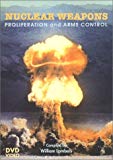
Nuclear Weapons: Proliferation and Arms Control
This DVD is a collection of archival films related to nuclear proliferation and arms control. There is footage of nuclear test explosions, President Eisenhower’s and President Kennedy’s pursuit of a nuclear test ban treaty, Atoms for Peace, civil defense drills for nuclear attack, and speeches related to nuclear arms control efforts. A main menu allows you to choose which historical films to view.
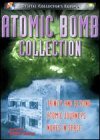
Atomic Bomb Collection
Trinity and Beyond, Nukes in Space: Rainbow Bombs, and Atomic Journeys: Welcome to Ground Zero
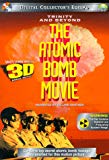
Trinity and Beyond: The Atomic Bomb Movie
In the salad days of nuclear-weapons testing, the United States detonated 331 atomic, hydrogen, and thermonuclear bombs. Many of those explosions appear in Trinity and Beyond, which utilizes a lot of declassified footage, most of it in color. Standouts include the United States’ South Pacific detonation of an atom bomb 90 feet below the water to study the effects on a fleet of ships. Surprise, surprise, they sink! If that wasn’t enough, the navy also loaded the decks with sheep to study the effects of the blast on life forms. Surprise, surprise, they die! Glowing leg of lamb anyone? This film will alternately amuse and horrify you at the rampant irresponsibility of the Soviets and Americans in their quest for nuclear domination. The Russians have the honor of having detonated the largest nuclear bomb ever at a whopping 58 megatons. The Hiroshima bomb was barely a kiloton. Of course, after the U.S. and Russia ceased their activities, the Chinese decided to get in on the act. But that’s a different story for a different documentary.
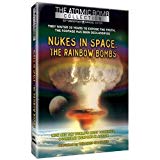
Nukes in Space - Rainbow Bombs
Boasting material that was recently declassified, this documentary presents some startling material about how the United States detonated a number of atomic bombs in space during a top-secret cold war weapons program. The history of military rockets is detailed, beginning with the Nazi V2 rockets that attacked England late in World War II. The problems encountered in the America’s cold war rocketry program is dramatically illustrated with a film montage of U.S. missiles spectacularly blowing up on their launch pads. After the Soviets launched Sputnik, America’s resolve to be able to wage war in space stiffened, and test detonations of atomic weapons in space began. The effects of these little-known tests were bizarre and included electromagnetic disturbances that blew fuses in Hawaii while creating beautiful, if dangerous, artificial auroras that gave the tests the nickname of the “Rainbow Bombs.” Of particular interest in this documentary are tapes of White House meetings at which President John F. Kennedy and his top science and military advisers discussed the atomic tests in space. The bomb detonations caused radiation problems in space, damaging fledgling communications satellites, and the government eventually called an end to the program. This is an entertaining and very informative look at a piece of cold war history that seems like vintage science fiction, yet it’s all real.
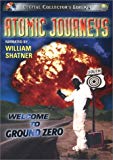
Atomic Journeys - Welcome to Ground Zero
Our atomic heritage resides in sites all over the country-from the Trinity test area to natural-gas wells in Colorado-and many of them are open to the public. Plan your vacation with Atomic Journeys: Welcome to Ground Zero, a blast through memory lane narrated by the perfectly suited William Shatner. Never-before-seen footage of test explosions and top-secret and work labs explores the history of America’s nuclear programs, and interviews with current and former atomic scientists and engineers give depth to sights such as “the most bombed place on Earth” in Nevada. Learn about nonmilitary uses of nuclear weapons, the rationales behind the different programs, and where you can find these strange places. The musical score is a special bonus, performed by the Moscow Symphony Orchestra in a goodwill gesture of post-cold-war cooperation.
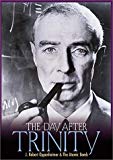
The Day After Trinity
The Day After Trinity is a haunting journey through the dawn of the nuclear age, an incisive history of humanity’s most dubious achievement and the man behind it-J. Robert Oppenheimer, the principal architect of the atomic bomb. Featuring archival footage and commentary from scientists and soldiers directly involved with the Manhattan Project, this gripping film is a fascinating look at the scope and power of the Nuclear Age.
